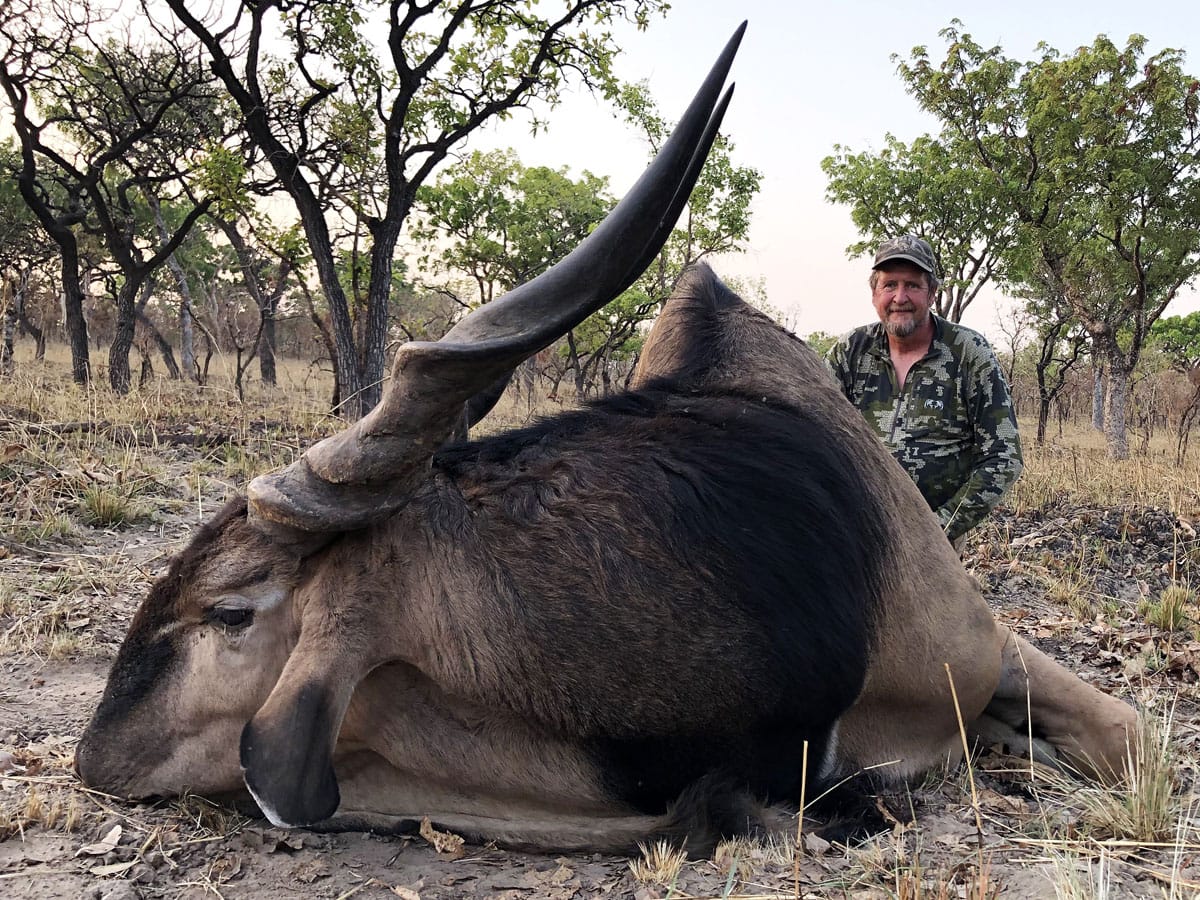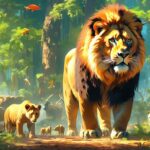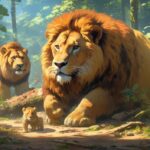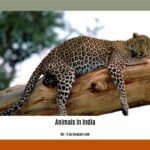Majesty on the Brink: The Lord Derby Eland
Imagine a creature that embodies both grace and power, a true giant among antelope – the Lord Derby Eland. With their impressive size and striking looks, they are truly a sight to behold. Picture a rich, tawny coat boldly striped with white, topped off with spiraled horns that seem to reach for the sky. Sadly, these magnificent animals are facing significant challenges to their survival.
Found roaming the open forests and savannas of western and central Africa, these gentle giants live in herds, grazing on plants and playing a vital role in their ecosystems. However, their existence is under threat. Deforestation is tearing away at their homes, while the ever-expanding footprint of agriculture and the looming danger of poaching cast dark shadows on their future.
There is hope. People are realizing the importance of protecting these incredible creatures, and dedicated conservationists are working tirelessly to safeguard the Lord Derby Eland. They are creating protected areas, stopping poaching with dedicated patrols, and working hand-in-hand with local communities to find solutions that benefit both people and wildlife.
The fate of the Lord Derby Eland hangs precariously in the balance, a stark reminder of the interconnectedness of our world. By spreading awareness, supporting conservation initiatives, and urging leaders to prioritize their protection, we can help ensure that the Lord Derby Eland continues to grace the African plains for generations to come.
Unlocking the Hunt for Lord Derby Eland: Your Guide
For those seeking the ultimate hunting adventure, the pursuit of the Lord Derby Eland is a journey into the heart of Africa. Here’s a guide to navigating this thrilling experience:
Cameroon: A Lord Derby Eland Paradise
Cameroon, with its sprawling savannas and dense woodlands, is practically bursting at the seams with Lord Derby Eland. The country’s dedication to conservation and its perfectly suited environment make it a haven for these magnificent creatures. Venturing into these wild spaces can be daunting, but experienced outfitters are available, knowing the land like the back of their hand and significantly increasing the chances of a successful hunt.
Central African Republic: The Ultimate Test for the Adventurous Hunter
For a truly wild and untamed experience, the Central African Republic (CAR) beckons. Imagine vast, untouched landscapes, where few have dared to tread. It’s here that you’ll find an abundance of Lord Derby Eland, roaming free in their natural kingdom. But be warned, this is not for the faint of heart! Navigating the CAR’s rugged terrain, often without established roads, requires grit, determination, and a strong sense of adventure.
Choosing Your Hunting Style: Safari or Fly-In?
Safari Hunts: For those who envision tracking on foot, immersing themselves in the sights, sounds, and smells of the African bush, a classic safari hunt is ideal. Experienced guides, who can read the subtlest of tracks, lead the way.
Fly-In Hunts: For those short on time or who prefer a different perspective, a fly-in hunt might be more suitable. Imagine soaring above the vast African plains, taking in the breathtaking scenery before landing in prime Lord Derby Eland territory. It’s an efficient and exhilarating way to maximize hunting time in remote locations.
Ethical Hunting and Essential Preparations
Before embarking on this adventure, there are a few essential things to remember. First and foremost, always prioritize ethical and sustainable hunting practices. This includes securing all necessary permits and licenses, ensuring your chosen outfitter adheres to strict conservation guidelines, and respecting the animals and their environment every step of the way.
Ensure your gear can withstand the demands of the African wilderness. High-quality optics are crucial for spotting Lord Derby Eland from a distance, while a reliable rifle and sturdy, comfortable boots are essential.
The Bigger Picture: Conservation and Community Impact
Ethical hunting plays a vital role in the conservation of these magnificent creatures and their habitat. Hunting fees contribute directly to anti-poaching efforts, wildlife protection programs, and community development projects. It’s a beautiful cycle where the passion for hunting helps ensure a thriving future for Lord Derby Eland and the communities that share their land.
Lord Derby Eland Size: Just How Big is the Largest Antelope?
Imagine walking alongside an animal taller than most basketball players, weighing more than a small car. That’s the Lord Derby Eland for you – Africa’s largest antelope. These animals are truly massive, with males reaching up to 5.9 feet tall at the shoulder and weighing over 2,000 pounds, sometimes even reaching a mind-blowing 2,210 pounds. To put that in perspective, that’s heavier than some motorcycles!
If you stretched a Lord Derby Eland out, you’d be looking at a length of around 9.5 feet, which is longer than a lot of compact cars out there! Keep in mind that these measurements usually refer to the males. Female Lord Derby Elands are still impressive, but they’re generally a bit smaller than their male counterparts.
Eland vs. Giant Eland: Unraveling the Mystery of Africa’s Largest Antelopes
The terms “eland” and “giant eland” are often used interchangeably, but what exactly sets these majestic creatures apart? While both are impressive in their size and grandeur, subtle differences distinguish them.
Size Isn’t Everything: Horns Take Center Stage
While the giant eland certainly lives up to its name, the most noticeable difference isn’t just their size, but the prominence of their horns. Giant elands possess larger, more heavily spiraled horns than their common eland counterparts, adding to their imposing presence.
Two Subspecies: Adding to the Intrigue
Adding another layer of fascination, the giant eland boasts two distinct subspecies: T. d. derbianus and T. d. gigas. The former, slightly smaller, inhabits the Congo Basin, while the latter, even larger, prefers Cameroon and the Central African Republic.
Beyond Size: Exploring the Differences
| Feature | Common Eland (Taurotragus oryx) | Giant Eland (Taurotragus derbianus) |
|---|---|---|
| Size | Slightly smaller | Slightly larger on average |
| Horns | Smaller and less heavily spiraled | Larger and more prominent, with more twists, giving them their “giant” name |
| Coloration | Uniform tan | Darker brown with thin white stripes |
| Subspecies | Not applicable | Two subspecies: T. d. derbianus and T. d. gigas |
Shared Heritage: A Common Ground
Despite their differences, both eland species share some impressive characteristics. They are the largest antelope species in the world, reaching up to 6 feet tall at the shoulder and weighing up to 2,200 lbs. Both possess long, spiraled horns and are social animals, forming herds of 15-25 individuals.
Conservation Concerns: Protecting Gentle Giants
Despite their size, both eland species face threats. Habitat loss, poaching, and human conflict are contributing to declining populations. Understanding the ecological importance of both common and giant elands is crucial for their conservation. By supporting sustainable practices and raising awareness, we can contribute to the protection of these gentle giants for generations to come.
For those fascinated by the breathtaking natural wonders of the world, the lion’s den gorge is a must-see destination. And if you’re curious about the lifespan of our beloved greyhound companions, this life expectancy of greyhound dogs article offers valuable insights.
- Unlocking 2-Letter Words with U: The Definitive Guide - April 4, 2025
- Unlock Words with the Letters THREE: Top Unscramble Tools 2025 - April 4, 2025
- Master Scrabble: X & Z Words for High Scores - April 4, 2025
















